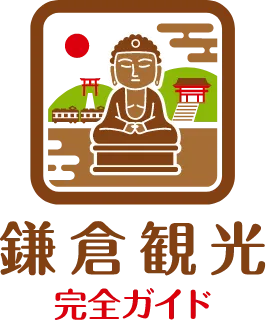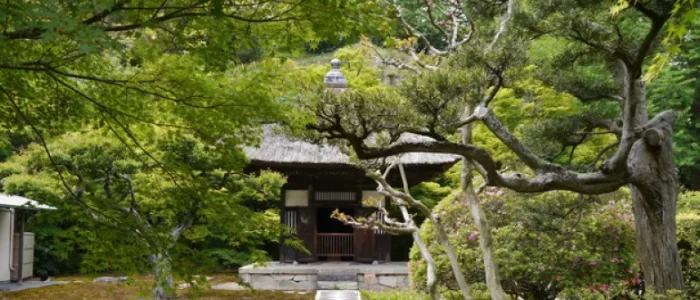Choju-ji Temple (長寿寺)
Discover Choju-ji Temple
Nestled in the quiet hills of Kita-Kamakura, Choju-ji Temple is a distinguished Zen temple of the Kencho-ji School of the Rinzai sect. It was originally founded in the early 14th century by Ashikaga Takauji (足利尊氏), the first shogun of the Muromachi shogunate. Built on the site of his former residence, the temple’s name derives from Takauji’s posthumous Buddhist title “Choju-ji-den.”
Later, Ashikaga Motouji (足利基氏), Takauji’s fourth son and the first Kamakura Kubo (shogunal deputy), developed the temple’s key structures, laying the foundation for its present form. Recognized as the highest-ranking temple outside the Kamakura Gozan (Five Great Zen Temples), Choju-ji Temple was under the patronage of the Ashikaga family and holds deep historical and religious significance as a sub-temple of Kencho-ji Temple (建長寺), Japan’s oldest Zen monastery.
Highlights: Dry Landscape Garden and Serene Shoin Hall
Visitors typically begin their visit with quiet prayers in the main hall before moving on to the Shoin Hall and smaller reception rooms. The dry landscape garden viewed from these rooms is striking in its composition—white gravel, moss, azaleas, maples, and bamboo come together in perfect harmony.
The garden was redesigned in 2007 by Kyoto-based landscape master Sone Zouen and now offers tranquil seasonal scenery year-round. Inside the Shoin Hall, traditional red floor cloths (himo-sen) and cushions provide a space to sit and quietly admire the view, offering an experience of stillness that’s rarely found in daily life.
Spiritual Offerings and Cultural Significance
At the rear of the temple grounds lies a five-ringed stone pagoda enshrining a lock of Ashikaga Takauji’s hair. It rests quietly in a yagura—an ancient cave tomb typical of the Kamakura region. Nearby, the Kannon Hall houses a statue of Sho Kannon Bosatsu (聖観音菩薩), and the ceiling is adorned with paintings of celestial maidens that evoke the imagery of the Pure Land.
The temple’s emphasis on Zen is also reflected in the display of ink-brushed Enso circles—symbols of enlightenment and the infinite—often hung in the main and Shoin halls. These symbols offer visitors moments of deep introspection amid the silence.
Access and Opening Hours
Choju-ji Temple is located approximately a 10 to 15-minute walk from Kita-Kamakura Station on the JR Yokosuka Line. The route leads you through a peaceful residential area surrounded by nature, enhancing the temple’s tranquil atmosphere.
The temple is open to the public only during specific seasons—spring (April to June) and autumn (October to early December)—mainly on Fridays, weekends, and public holidays. (Some weekdays may also be available.) Visiting hours are from 10:00 AM to 3:00 PM. Admission is 300 yen per person. Please note that the temple may close in rainy weather, so checking ahead is recommended.
Best Time to Visit
Spring and autumn are the best times to experience the shifting beauty of nature at Choju-ji Temple. Cherry blossoms, hydrangeas, plum trees, and vibrant autumn foliage all add to the temple’s seasonal charm.
Guests staying at Tosh’s Place (トシズプレイス) can conveniently visit the temple on special open days without rushing. Sitting quietly in the Shoin Hall and taking in the view of the garden is a rare opportunity for peaceful reflection.
Nearby Temples to Explore on Foot
From Choju-ji Temple, you can walk to other historic temples in Kita-Kamakura, including Engaku-ji Temple (円覚寺), Tokei-ji Temple (東慶寺), and Jochi-ji Temple (浄智寺). Each offers a peaceful setting embraced by nature—ideal for rebalancing the mind.
Who This Is Perfect For
- Those interested in history and Zen Buddhism
- Solo travelers seeking solitude and quietude
- Visitors looking to connect with nature in a meditative setting
- Travelers who prefer introspective moments over typical sightseeing
Wrap-Up: A Special Moment of Clarity in Kita-Kamakura
Choju-ji Temple offers a rare blend of heritage, spiritual depth, and serenity. Open only during limited seasons, it gives visitors the chance to reconnect with themselves in a setting shaped by centuries of Zen tradition. If you’re staying at Tosh’s Place (トシズプレイス), it’s easy to explore temples like this without feeling rushed. Beyond sightseeing, this is an experience of mindfulness and stillness—woven seamlessly into your journey.

